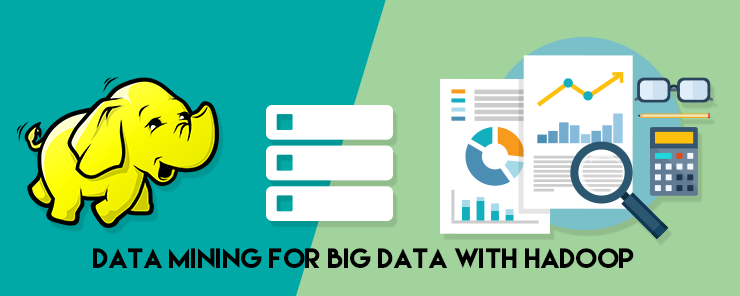Big Data
The availability of large data sets presents new opportunities and challenges to organizations of all sizes. Hadoop is a tool that can help solve problems in processing large, complex data sets.
Data mining incorporates investigating and dissecting large amounts of data, or what is now known as Big Data to discover patterns and insights. The procedures, which emerged from the fields of statistics, database management and artificial intelligence is having more and more of an impact in the worlds of science and business.
What is Data Mining?
Data mining is the process of interpreting data from several sources and consolidating it into valuable information - information that can be utilized to improve revenue, cut costs, and more. Technically, data mining is the process of finding correlations or patterns among dozens of fields in large relational databases.Aims of Data Mining
For a company to use data more meaningfully and position itself better, data mining can be used to:
- To discover structure inside unstructured data
- Extract meaning from noisy data
- Discover patterns in apparently random data
- Use all this information to understand better trends, patterns, correlations, and ultimately predict customer behavior, market and competitive trends
Most organizations now have some enterprise data warehouse (EDW) set up, utilizing it to make reports, such as quarterly statements, for further analysis by the office staff and senior management.
What is Big Data?
Big Data concerns large-volume, complicated, growing data sets with multiple sources. With the quick improvement of systems administration, data storage, and the data gathering limit, Big Data is quickly growing in all science and engineering domains, including physical, natural and biomedical sciences.Related articles
This data-driven model includes demand driven aggregation of information sources, mining and investigation, behavioral modeling, and security and protection analysis.Big data is a term for a huge data set. Big data sets are those that exceed the distinct type of database and data handling architectures that were utilized as a part of former times when big data was more costly and less attainable. For instance, sets of data that are too extensive to be adequately taken care of in a Microsoft Excel spreadsheet could be related to as big data sets.
Big Data and Data Mining
Data mining can include the utilization of various types of software packages, like analytics tools. It can be robotized, or it can be to a great extent labor-intensive, where individual workers send particular inquiries for information to a document or database. Data mining refers to operations that include sophisticated search procedures that return targeted on and exact results. For example, a data mining tool may view dozens of years of accounting information to find a particular column of expenses or accounts receivable for a particular working year.Big data and data mining are two distinct things. Both of them associate with the use of large data sets to handle the accumulation or reporting of data that serves organizations or different beneficiaries. Then again, the two terms are utilized for two unique components of this sort of operation.
Hadoop
Hadoop, a structure, and collection of tools for processing enormous data sets, was originally designed to work in groups of physical machines. That has changed.The Apache Hadoop software library is a framework that allows for the distributed processing of large data sets across clusters of computers using simple programming models. It is designed to scale up from single servers to thousands of machines, each offering local computation and storage. Rather than rely on hardware to deliver high-availability, the library itself is designed to detect and handle failures at the application layer, so delivering a highly-available service on top of a cluster of computers, each of which may be prone to failures.
Many people use the Hadoop accessible source project to process large data sets because it’s an excellent clarification for scalable, stable data processing workflows. Hadoop is by far the most conventional system for handling big data, with organizations practicing huge bunches to collect and process petabytes of data on thousands of servers. Hadoop in collabortion with technologies like MapReduce, Yarn, Sqoop, Hive, Pig, etc. have created a buzz by bringing intelligent analytics in dealing with Big Data related issues.
Summing Up
To be innovative and competitive today refined analysis of a complex data is often a necessity. Despite this, there is a growing gap between more robust storage and retrieval systems and the user's expertise to analyze efficiently and act on the information they contain.If approached with an open mind and using an ever-increasing data set, along with the necessary hardware and a good architecture such as Hadoop to extract the buried information, companies can indeed profit in many ways from data mining and realize unseen potential.
| By Vaishnavi Agrawal | Embed |
Author Bio - Vaishnavi Agrawal loves pursuing excellence through writing and have a passion for technology. She has successfully managed and run personal technology magazines and websites. She is based out of Bangalore and has an experience of 5 years in the field of content writing and blogging. Her work has been published on various sites related to Hadoop, Big Data, Cloud Computing, IT, SAP, Project Management and more.





Thanks for sharing the descriptive information on Hadoop tutorial. https://www.youtube.com/watch?v=1jMR4cHBwZE
ReplyDelete